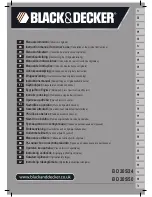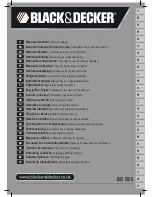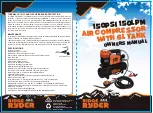
Form 420234
Page Number - 5
OPeratiOn
1. For best results, run the engine to warm up the oil. Oil tempera-
ture should be between 150° and 175° F (70° and 80° C) prior
to evacuation.
2. Place the vehicle transmission in park or neutral, apply the parking
brake, and turn off the key.
3. Open the hood and remove the dipstick.
Warning:
The motor must be off when performing oil evacuation
through the dipstick tube.
4. Select the evacuation adapter for the make and configuration of
the vehicle, or the appropriate evacuation wand with the largest
possible diameter to fit in the dipstick tube.
5. Install the evacuation adapter into the dipstick tube, or insert
the evacuation wand as deep as possible into the dipstick tube
without touching the bottom (Fig. 1).
Warning:
Do not force the evacuation wand into the crankcase.
Stop pushing the evacuation wand into the dipstick tube if resis-
tance is felt.
6. Close valve A between the venturi and the tank (Fig 2).
7. Close valve B near the suction end of the evacuation hose (Fig 3).
8. Connect a compressed air hose with pressure between 90 and
150 psi (6 – 10 bar) to the air nipple extending from the venturi
(Fig. 4).
9. Open valve A and allow the venturi to operate until the gauge
needle moves into the green zone (Fig. 5).
At this point the tank is fully charged. For the best performance,
leave the air hose connected to the venturi during evacuation to
maintain the vacuum charge in the tank. If the application is re-
mote from the compressed air supply, close valve A and discon-
nect the compressed air supply from the venturi. The tank will
maintain the initial charge until it has been used up during the
evacuation process.
10. Locate the evacuator so the evacuation hose is within reach of
the evacuation adapter or wand previously inserted in the dip-
stick tube.
11. Insert the suction end of the evacuation hose into the coupler
on the end of the evacuation adapter or wand (Fig. 6).
12. Open valve B on the end of the evacuation hose and allow the
evacuator to withdraw the desired amount of fluid (Fig. 7).
Warning:
Never fill the tank over the maximum limit shown on
the sight gauge located on the side of the tank.
13. Close valve B to stop evacuation (Fig. 8).
fig. 1
fig. 2
fig. 3
fig. 4
fig. 5
fig. 6






































